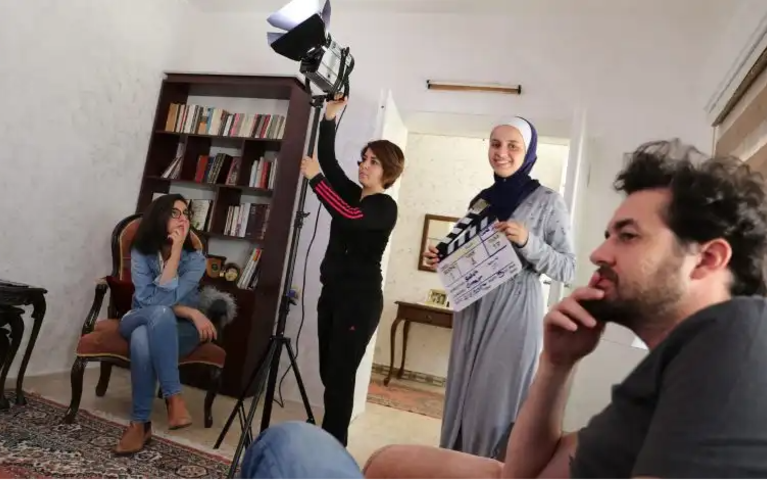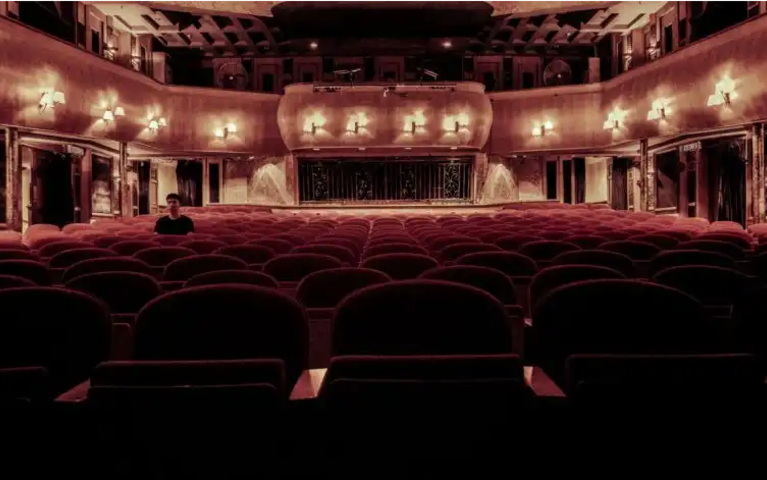The Lost Legacy of Madame Guy-Blaché

A Moment of Revelation: Cinema Had a Founding Mother
In a dark screening room, at the American University’s library in Washington, D.C., I was shuffling through clips from the silent era of filmmaking in preparation of my upcoming “History of Documentary” class on the early days of cinema. I had to go through a vast range of films made right after the Cinematograph was introduced. I am embarrassed to admit that I would frequently lose patience with completing a good 10 to 12 minute one-realer of silent action. That was until I arrived at a two-volume DVD titled: “Gaumont Treasures”.
The films were technically outstanding, with intricate masking techniques and exceptional optical effects. Something that caught my interest, and broke the pattern of monotony and therefore boredom, was that those films had sound synchronization. Those films had certainly left me intrigued as it had been engraved in my system that such a pre-talkies period was not mature enough to handle sound. Not to mention the profound sense of humor that brushed off all the tediousness and left me rather entertained. It took me a minute to register that the movies that left me captivated held the same signature: Alice Guy. A female.
Curious, I started digging further. Alice took me to her wonderland of cinematic treasures, to a voyage of concepts that I never thought had existed during her time.
A Witness on and a Contributor to the Birth of Cinema
At the turn of the 20th century, “anything that was new under the sun could be found in Paris,” as Professor Vanessa Schwartz, University of Southern California, puts it. The City of Lights was the place where innovation would meet invention. Competition and collaboration between engineers and scientists was nurtured by new technologies and business opportunities. Film projection was a particular hurdle inventors were racing to resolve.
On a March day of 1894, two brothers, none other than Auguste and Louis Lumière, stopped by the French House of Gaumont in Paris, with an invitation restricted only to friends and colleagues. Léon Gaumont, founder of The House and one of the competing engineers, was at the welcome. Monsieur Gaumont had a 22-year-old secretary sharing his office, to whom the brothers extended their invitation. At the time, being a secretary was a very fine, upper-middle task job. The young secretary was Alice Guy.
And so, there she was in the Société d’Encouragement pour l’Industrie Nationale, witnessing the birth of cinema; long before anyone did. The Lumières put up a sheet, and cranked a small machine that they called the Cinematograph. The demonstration was exclusive. The machine was revealed to young Alice nine months before its historic debut that disclosed the invention to the public. There, the famous screening of “Workers Leaving the Lumière Factory” was the tipping point that morphed the still picture into a motion one.
A Doorway to the Narrative Form
Daughter of a bookseller, Alice Guy grew up surrounded by books. The art of storytelling became running in her system. Watching, from behind her desk, people filming whatever comes before their cameras; street scenes, trains and cars, was something she could no longer stand. She was certain something better can be done. She proposed to Léon Gaumont that he offers her the chance to experiment shooting some scenes. Thanks to young Alice, cinema started to take its narrative form. Alice has given cinema its first scripted movie: “La Fée aux Choux” (The Cabbage Fairy) (1896). Alice played the role of the husband, created the dolls and operated them in that film. As she reflects on the experience, her eyes sparkle with nostalgia: “We made cabbages out of cardboard and used wooden dolls for babies; except for one… The mother was nervous!”
At a time when neither the title nor the trade of a filmmaker existed, this would be the first time a film would be written, directed and produced by the same person. 70 years ahead of the French New Wave; even long before the word entered the film vocabulary, France had a cinema d’auteur, the cinema of pioneer Alice.
With eighty copies sold, Alice was promoted to become Head of Productions at The House Gaumont. She set the style for The House by filming in real locations. She supervised every stage of the film production value chain; from script preparation, to set design to costume design. She oversaw the work of all of the companies’ film directors. She trained other pioneering luminaries of the art; all of which were men, including Louis Feuillade and Étienne Arnaud. She, herself, was a director and a scriptwriter. 30 years prior to Hollywood arriving to the talkies, young Alice would be experimenting with sound and synching it to image; producing early cinema versions of sound film.
The Heavy Price of being a Woman
As if wearing a corset-padded ankle-skirt when directing was not trouble enough for a woman filmmaker in the early 20th century, that very gender will go on to present Alice Guy with some of her most serious challenges. Those challenges will extend towards her gaining her rightful place in history. Although being a female played a major role in excluding her legacy from history books, it played a role in the details of her career as filmmaker. A perfect example that demonstrates this gender-based repression takes place in one of Alice’s most acclaimed films: “La Passion” (Life and Passion of the Christ) (1903).
One morning of 1906, Alice would arrive on set to find that the Head of the Workshop at Gaumont had destroyed all her completed sets and fed them to fire. With 25 different sets and hundreds of extras, costumes and live animals, “La Passion” was, arguably, her if not her time’s, biggest and most expensive film. With that film, she had presented a mature understanding of depth of field and a sophisticated sense of lighting and art design. When put in the context of her time, at 44 minutes in duration, the film is considered one of the earliest feature-length narratives. Alice did not gain recognition for her work, nor her contributions to the craft, in this film. Until lately, the film was attributed to her assistant Victorin-Hippolyte Jasset.
Another gender-related aspect that led to the demise of Alice Guy’s career was her marriage. Although she was far ahead of her time in many ways, Alice still did not escape her Victorian upbringing. When she married Herbert Blaché, she had to leave France for the U.S. back to point zero. She had to work towards building a new career and a new identity. Her passion took her towards establishing her own production firm, Solax Films, in 1910s Hollywood; FortLee, New Jersey. “Hollywood was a small town where they put signs on the doors; no dogs or actors!” confirms Madame Blaché. Under the company’s banner, Alice continues directing many successful films. Solax became the largest studio in the U.S.
But Herbert Blaché repeatedly placed his own name above hers in all of their productions and dealings. Before long, he had her fold up the company and establish Blaché Features; a new production house that produced films under his sole name. The work that came out under the new company was of remarkably inferior quality that left the couple an easy prey to competition and financial problems. With multiple similar sacrifices, her visibility ended up being obstructed.
Mr. Blaché started then venturing into relationships with other female stars in Hollywood. The Blachés finally divorced in 1922. Alice, at the moment a full-time single mother, returns to France with her kids, never to work in cinema again.
A Forgotten Name behind Many Firsts
The case of Alice Guy-Blaché is a proof of how discriminating history can be. Although she was legitimate enough to be referred to as the founding mother of the craft, not until the early 21st century would she make her way to the historical record. She was completely, if not deliberately, ignored by film historians.
French director Georges Méliès is often referred to as the “Magician of Cinema”. Continuity and parallel editing are often attributed to American film pioneer Edwin S. Porter. The close-up shot is usually credited to American film director D.W.Griffith. Although her name is repeatedly dropped from historic books, Alice Guy-Blaché had indeed given cinema what had become standard filmic devices. The close-up, the fade, the dissolve, the intertitle, superimpositions, the fast and slow motion and single-frame animation were all her contributions.
Even when she moved to the U.S., Alice’s maturity took her to explore many themes that were controversial at her time. She was the first to direct a film with an all-African-American cast and tell a middle-class black community story without prejudice or stereotypes. She further delved into themes of gender identity through cross dressing (women dressing up as men and vice versa).
She owns the director’s credit for more than 700 short films. Recognition of her name was too little and far too late, when she died at the age of 94. By the time she passed, she had not been able to direct a film for the last forty-eight years.
* Areeb Zuaiter is a visual storyteller and a professor at the School of Communication at the American University and Howard University. She teaches Visual Literacy, Media Production and History of Documentary.















